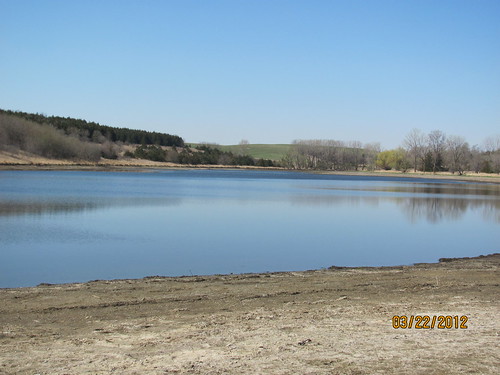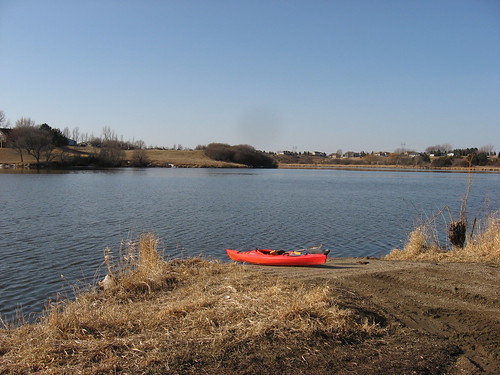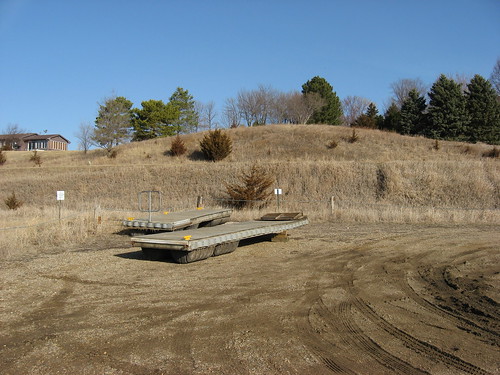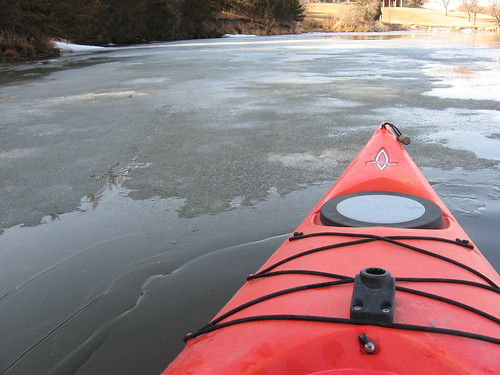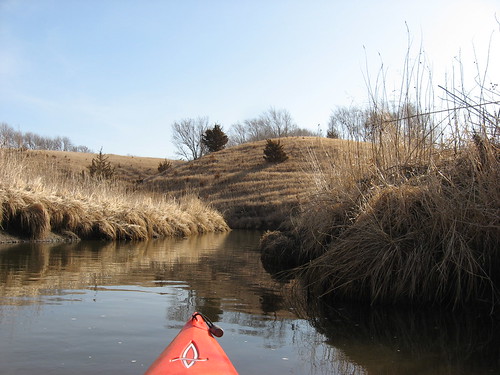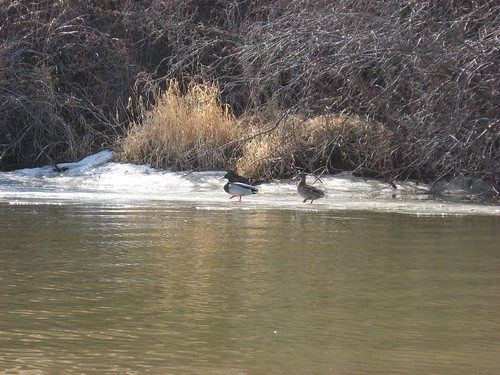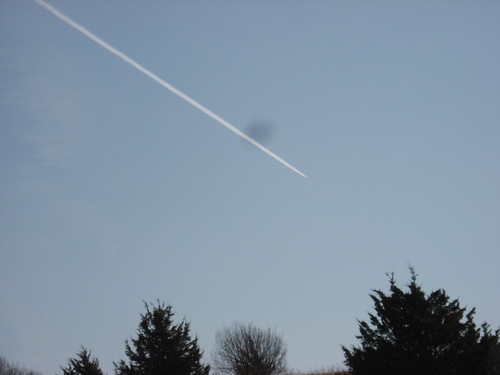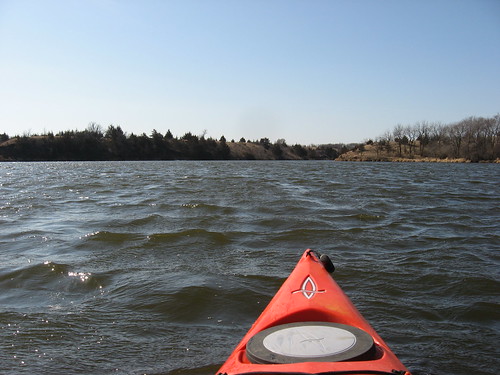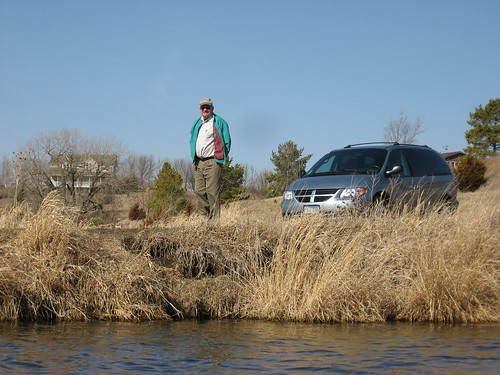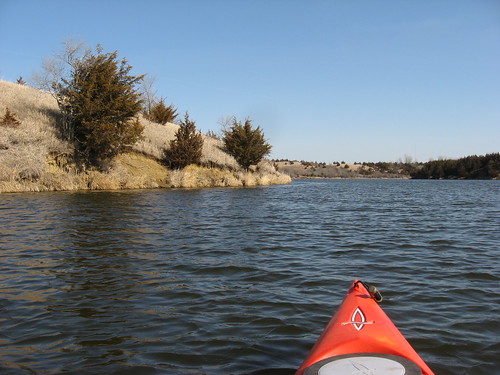
Taking advantage of a great paddling forecast, I decided this morning to head out to Lake Lakota for a cruise around this scenic setting and to check out the advancing spring. Lake Lakota is a part of the Newton Hills State Park and is less than 30 miles from my eastside Sioux Falls home.
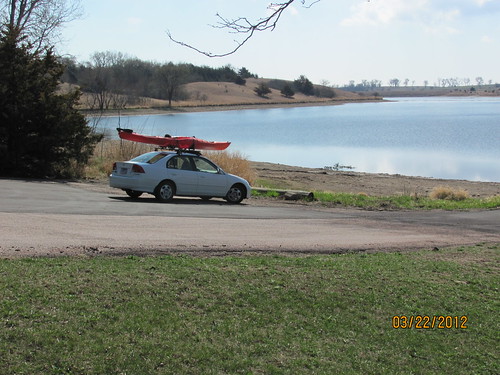
I left town about 10:00 a.m. into the lingering traces of a widespread fog that blanketed the area, a temperature of about 50 degrees, and very light winds. I was looking forward to cruising around the perimeter of the lake and finding glimpses of waterfowl and perhaps other critters out and about.
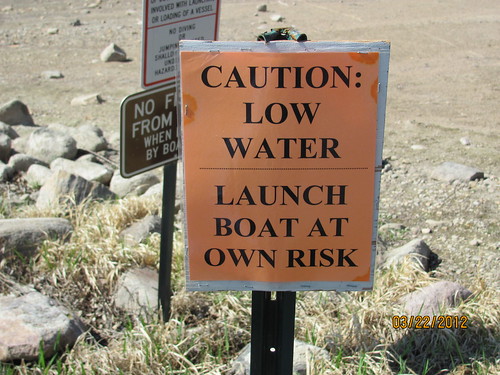
When I arrived, I was astonished to find that the lake was in a state of serious contraction due to exceptionally dry conditions this winter and spring. The shoreline had retreated about 25 feet or so all around the lake along with a drop of about 5-7 feet in water depth. A mud flat extended from the water’s edge to the shoreline. The water depth in the remainder of the lake varied from a few inches to well over the length of my double-blade paddle.

I cruised around the perimeter of the lake, but the several inlets extending from the surrounding watershed had largely dried up. Still, I was able to travel up to the dam and then back and up into the western arm, although that arm slowly diminished in depth until the final 50 yards or so were first marshy and then dry. At the end of the arm, I found myself drifting along in water only a few inches in depth until further forward progress was impossible.
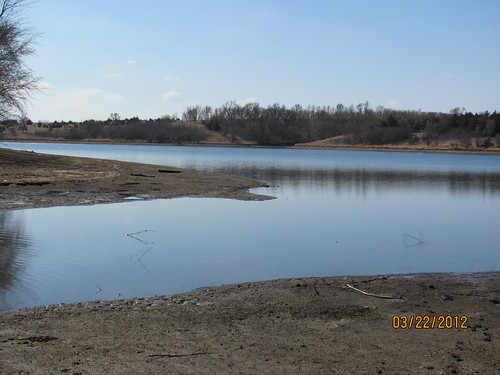
There was little wildlife visible today. Since there was little wind, the sound of bird life among the shoreline trees was constant and there were a few ducks on the water. Unlike last spring, no pelicans were visiting today. I did see turtle heads peeking up from time to time and even saw a couple of them below the surface in the very shallow waters of the western arm.

There was one guy out fishing from the shore. We spoke briefly, and he told me that he had not seen Lake Lakota this dry in 25 years. Still, he said, “however it goes, it is a beautiful day.” It was a nice sentiment and left me smiling.
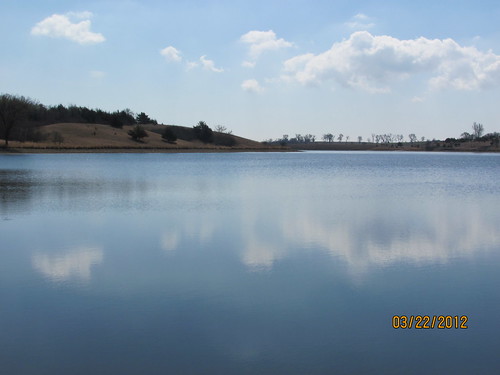
It is not likely that people would be able to easily use a fishing boat under the current conditions. The dock has not been put in and the concrete boat ramp ends just before the water. So, I would guess that it would not be very easy to launch a boat from a trailer.
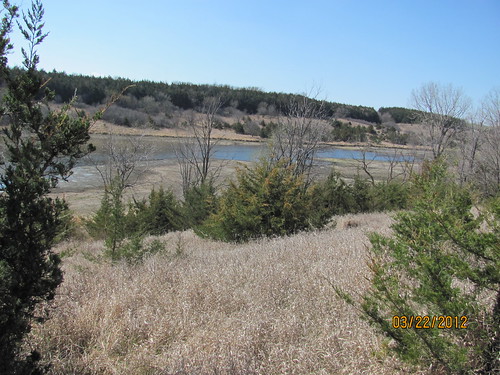
I think that the condition of Lake Lakota is such that it cannot be recommended as a paddling site for now. Perhaps we will have big spring rains and the lake will fill up again. I certainly hope that takes place. For a look at Lake Lakota under better conditions, check out the many narratives found under the area waterways inventory on the right side of the blog.
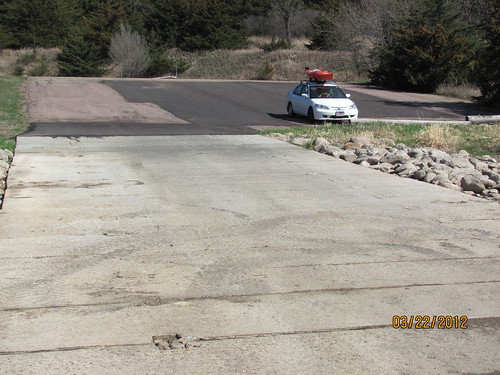
A word about the photos: My usual camera has developed a defect, and I borrowed my wife’s camera. Somehow, the date stamp was activated, and in the process of trying to turn that feature off, I lost all the photos that I took from my kayak. When I noticed that the photos had disappeared, I took another batch from the shore after returning. I was not able to get the date stamp removed until I got home and fiddled with the camera. The date stamped on the photos is also a day off. Irritating!
